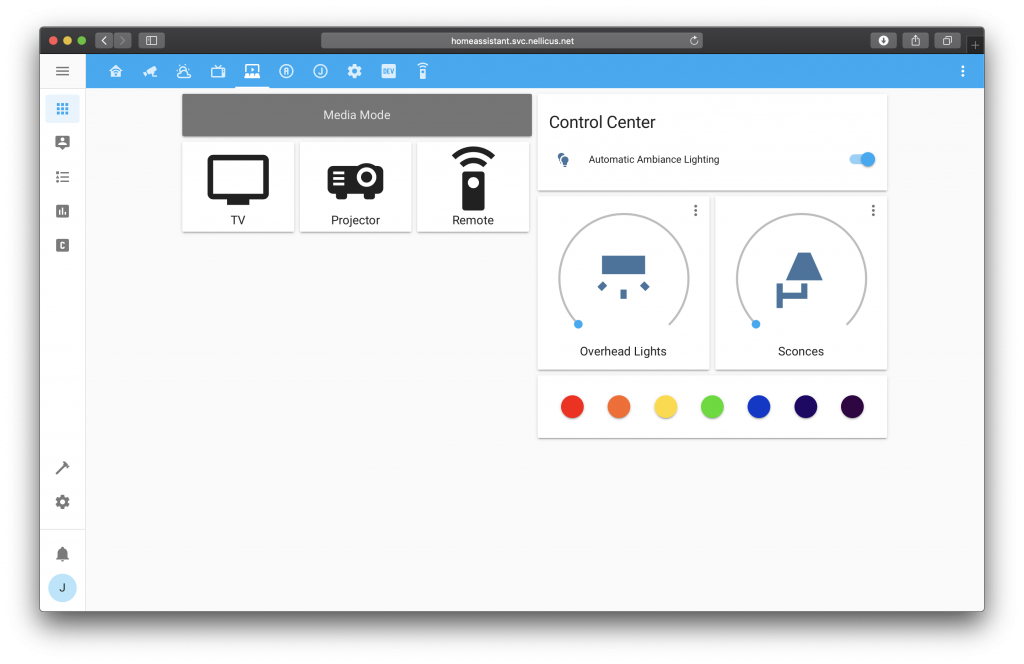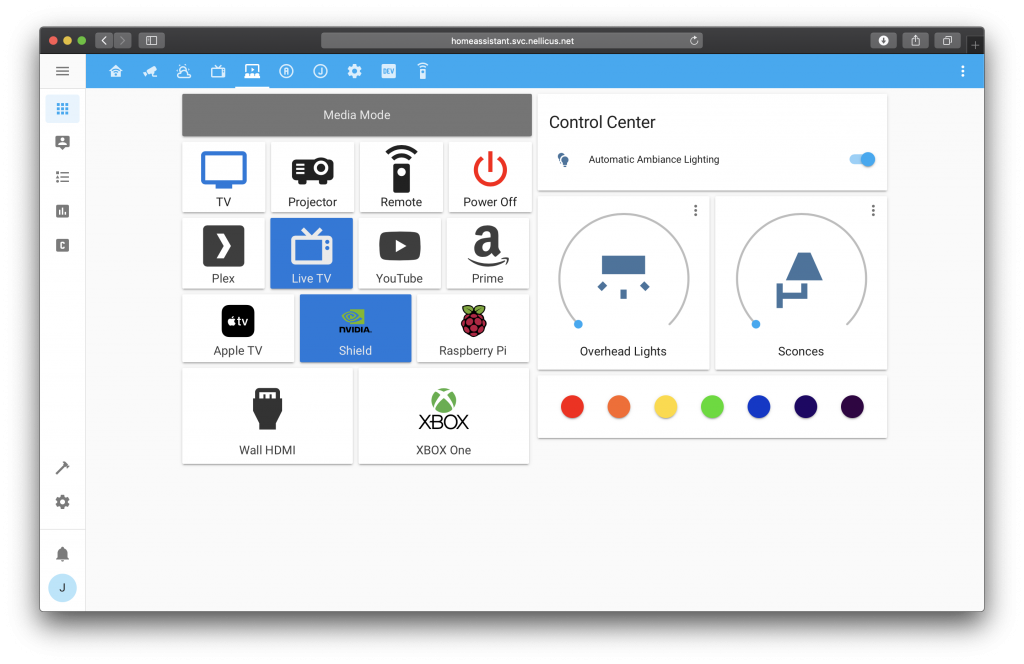One of the most important and unique configurations in my HomeAssistant is the control panel used for my home theater. Since this is a space that family and friends are frequent fliers, it was important to keep the controls as simple as possible. If you have dabbled in the world of home theater you know its very easy to amass a variety of different controllers and certain nuances related to a setup that do not articulate well to people who do not use the environment every day.
For these reasons, I set out to come up with a solid solution that would be simple to maintain (read: works 95% of the time without intervention) and teach anyone who would be a potential user of the theater.
The star product of my setup is the Logitech Harmony Elite universal remote control. The Harmony allows me to create activity combinations for each source in my AVR and use them on either the projector or TV.
Without further ado, I present my control panel.

The home page presents the most relevant controls for the media and lights. A user is then able to interact with the Media Mode to select which they would like to use.


Once a Media Output Mode is selected the user is then presented with a variety of actions and sources. The top row of actions will launch the user directly into the corresponding app served up from a NVIDIA Shield. Additionally a the user is presented with a list of sources available for a given output.
Once a source is selected it will update the interface to show the active source and provide a means to control the components with a custom remote panel or more frequently used provide the ability to use the Harmony remote control.

Finally, the addition of a Power Off button provides for a quick and easy way to power off all of the components when the user is done.
In the next post I will cover more technical aspects of the setup and provide a deeper dive into the configuration needed in Home Assistant to tie all of the configuration together.
Comments (0)